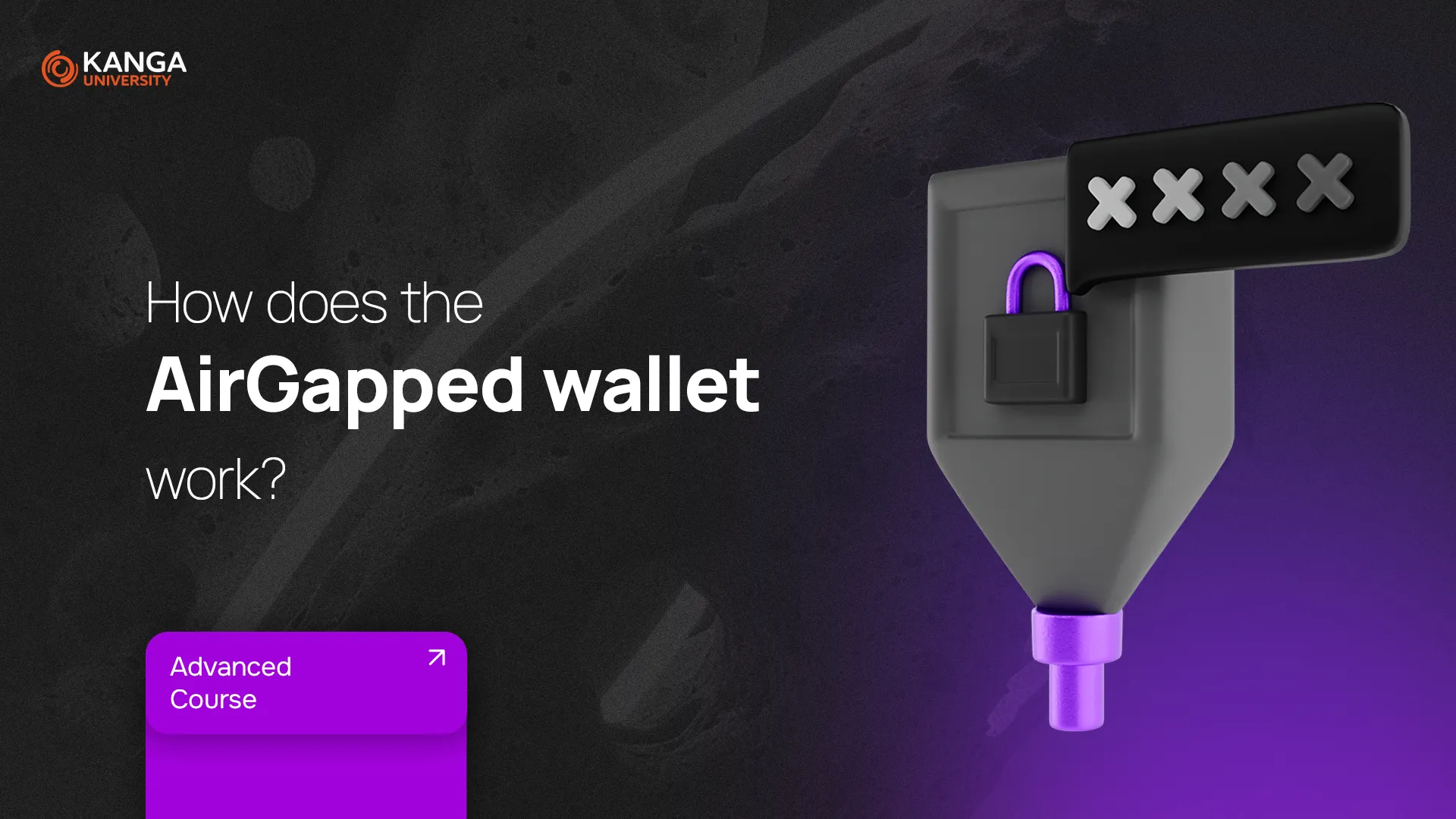
As cryptocurrencies gain popularity, more and more secure ways to store them are emerging. From mobile apps to dedicated hardware devices, users can choose from a wide range of wallets. One of the most advanced and secure solutions on the market is the AirGapped wallet.
AirGapped wallets are unique because they are completely disconnected from any network. They don’t use Wi-Fi, Bluetooth, USB, or even NFC. This makes them highly resistant to hacking attempts. But are they practical for everyday use? That’s exactly what we’ll explore in this lesson.
What is an AirGap?
An AirGap is a security measure that isolates a device from untrusted networks, such as the Internet, by removing all forms of network connectivity. These setups are commonly used in environments where data protection is critical, like military or government systems.
In the crypto world, an AirGapped wallet is designed to never connect to the Internet or any wireless communication. The term “air gap” refers to the literal gap between the wallet and any form of online or wireless access. This physical separation provides an extra layer of protection against remote attacks or malware.
How Do AirGapped Wallets Work?
AirGapped wallets rely on QR codes or microSD cards to move transaction data in and out. Here’s how a typical crypto transfer works with an AirGapped device:
-
The user creates an unsigned transaction on a separate app or device.
-
The transaction is encoded into a QR code or saved on a microSD card.
-
The AirGapped wallet scans the QR code or reads the file from the card.
-
It signs the transaction using the private key stored securely on the device.
-
The signed transaction is returned to the online device via QR or card.
-
Finally, the signed transaction is broadcasted to the blockchain network.
At no point do the private keys leave the AirGapped device.
Types of AirGapped Wallets
AirGapped Hardware Wallets
These are dedicated devices built for storing private keys and signing transactions offline. They often have small screens to display transaction details and physical buttons for manual confirmation.
AirGapped Computers
A full desktop or laptop can be converted into an AirGapped system by removing all networking capabilities. It’s used solely for storing keys and signing transactions, with data transferred via USB sticks or microSD cards. This setup requires a higher level of technical skill.
AirGapped Smartphones
Similar to computers, these are phones that have been reset to factory settings and configured without any network access. Wallet software is installed via SD card, and the phone is used exclusively for signing transactions.
Which Wallet Should You Choose?
There’s no one-size-fits-all answer. For long-term storage or large amounts of crypto, an AirGapped wallet is one of the safest choices. However, if you make frequent transactions, the convenience of online wallets or standard hardware wallets might be a better fit.
The best strategy is often to combine solutions. You can keep a portion of your crypto in a regular wallet and the rest in an AirGapped wallet. Add extra layers of protection like multi-signature (multi-sig) or distributing keys across locations for maximum security.
Summary
AirGapped wallets take crypto security to the next level. By staying completely offline, they minimize the risk of hacking and malware. They are perfect for users who plan to hold (HODL) their assets for a long time and don’t need to access them frequently.
However, this type of wallet may not be ideal for everyone. If you need to move crypto often, the process of signing and transferring transactions can feel slow and inconvenient. Ultimately, the right wallet depends on your usage style and security needs.